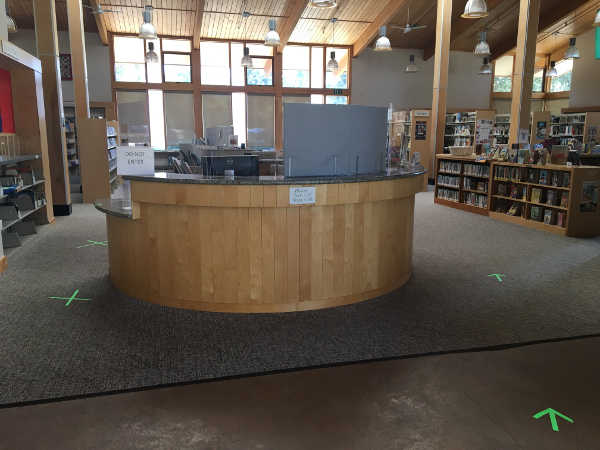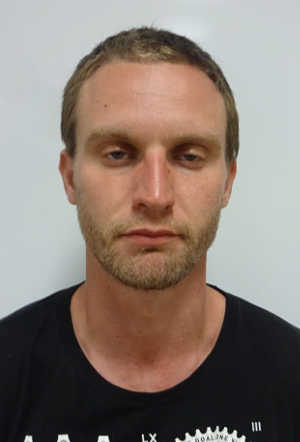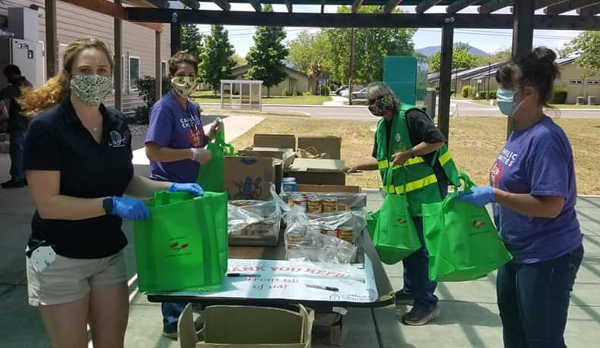In its first projections comparing different actions to control COVID-19 transmission, the
Institute for Health Metrics and Evaluation, or IHME, at the University of Washington is forecasting nearly 180,000 in the United States will die by Oct. 1.
The forecast shows 179,106 deaths – with a range of 159,497 to 213,715). Those numbers drop to 146,047, with a range of 140,849 to 153,438, if at least 95 percent of people wear masks in public.
“There is no doubt that even as states open up, the United States is still grappling with a large epidemic on a course to increase beginning in late August and intensifying in September,” said IHME Director Dr. Christopher Murray. “People need to know that wearing masks can reduce transmission of the virus by as much as 50 percent, and those who refuse are putting their lives, their families, their friends and their communities at risk.”
The new US forecast is lower than the forecast of 201,129 deaths released on June 15.
California and other states have seen over the past several weeks increasing case numbers, but deaths are not yet rising at the same rate, a trend which could change in the coming weeks.
The forecast projects 8,745 deaths in California – with a range of 7,709 to 10,489 – with mask wearing, while 11,631, with a range of 9,093 to 17,007, could die without mask wearing. More than 5,800 have died so far, based on reports from county Public Health departments statewide.
“States reporting the ages of confirmed cases suggest there are more cases being detected in younger people who are at substantially lower risk of death than older people,” Murray said. “It remains to be seen how this will unfold over the next few weeks, and if transmission continues to go up, we may see increasing infections in at-risk populations.”
IHME’s new projections include the re-imposition of strong social distancing mandates when deaths per day reach a level of 8 per one million people, but currently only Texas and Florida reach this level of resurgence before Oct. 1. Mask wearing at current reported rates is included in the model.
“These factors are vital in our projections and highlight how many lives can be saved,” Murray said.
The forecasts by state with and without 95 percent wearing masks are:
Alabama: With mask use 1,334 (range of 1,118 to 1,644) / Without mask use 2,008 (range of 1,301 to 3,384).
Alaska: 18 (range of 14 to 31) / 30 (range of 16 to 97).
Arizona: 3,195 (range of 2,389 to 4,623) / 5,687 (range of 3,163 to 11,174).
Arkansas: 576 (range of 374 to 1,028) / 988 (range of 431 to 2,601).
California: 8,745 (range of 7,709 to 10,489) / 11,631 (range of 9,093 to 17,007).
Colorado: 1,796 (range of 1,687 to 2,047) / 1,920 (range of 1,699 to 2,651).
Connecticut: 4,473 (range of 4,395 to 4,605) / 4,513 (range of 4,411 to 4,693).
Delaware: 488 (range of 466 to 522) / 501 (range of 470 to 554).
District of Columbia: 619 (range of 590 to 664) / 668 (range of 610 to 775).
Florida: 7,523 (range of 5,249 to 12,530) / 15,393 (range of 7,272 to 39,303).
Georgia: 4,269 (range of 3,419 to 5,888) / 6,614 (range of 3,977 to 12,291).
Hawaii: 28 (range of 23 to 44) / 48 (range of 25 to 149).
Idaho: 112 (range of 105 to 122) / 124 (range of 109 to 146).
Illinois: 7,717 (range of 7,296 to 8,295) / 8,487 (range of 7,560 to 9,936).
Indiana: 2,832 (range of 2,691 to 3,022) / 3,303 (range of 2,917 to 3,882).
Iowa: 815 (range of 769 to 894) / 874 (range of 791 to 1,042).
Kansas: 340 (range of 306 to 395) / 428 (range of 334 to 624).
Kentucky: 689 (range of 608 to 847) / 829 (range of 638 to 1,295).
Louisiana: 3,702 (range of 3,439 to 4,191) / 4,135 (range of 3,550 to 5,580).
Maine: 116 (range of 113 to 121) / 118 (range of 113 to 125).
Maryland: 3,434 (range of 3,324 to 3,574) / 3,611 (range of 3,398 to 3,894).
Massachusetts: 8,553 (range of 8,357 to 8,793) / 8,802 (range of 8,483 to 9,208).
Michigan: 6,354 (range of 6,251 to 6,517) / 6,534 (range of 6,333 to 6,937).
Minnesota: 1,701 (range of 1,625 to 1,803) / 1,797 (range of 1,676 to 1,970).
Mississippi: 1,141 (range of 1,074 to 1,242) / 1,237 (range of 1,118 to 1,438).
Missouri: 1,624 (range of 1,269 to 2,396) / 2,778 (range of 1,506 to 6,349).
Montana: 29 (range of 23 to 44) / 39 (range of 24 to 98).
Nebraska: 376 (range of 306 to 505) / 529 (range of 328 to 1,000).
Nevada: 655 (range of 580 to 824) / 788 (range of 602 to 1,355).
New Hampshire: 542 (range of 431 to 784) / 668 (range of 449 to 1,230).
New Jersey: 13,551 (range of 13,299 to 13,878) / 13,808 (range of 13,385 to 14,395).
New Mexico: 669 (range of 541 to 1,002) / 851 (range of 558 to 1,852).
New York: 31,729 (range of 31,606 to 31,866) / 31,837 (range of 31,676 to 32,021).
North Carolina: 1,647 (range of 1,480 to 1,901) / 1,957 (range of 1,585 to 2,689).
North Dakota: 88 (range of 83 to 95) / 92 (range of 84 to 104).
Ohio: 3,280 (range of 3,070 to 3,614) / 3,781 (range of 3,282 to 4,759).
Oklahoma: 465 (range of 428 to 526) / 546 (range of 451 to 728).
Oregon: 359 (range of 276 to 532) / 836 (range of 357 to 2,312).
Pennsylvania: 7,238 (range of 6,833 to 7,814) / 7,799 (range of 7,017 to 9,214).
Rhode Island: 1,085 (range of 1,029 to 1,179) / 1,120 (range of 1,045 to 1,252).
South Carolina: 922 (range of 799 to 1,106) / 1,172 (range of 866 to 1,712).
South Dakota: 133 (range of 109 to 175) / 174 (range of 118 to 290).
Tennessee: 793 (range of 680 to 973) / 941 (range of 719 to 1,367).
Texas: 5,582 (range of 4,033 to 8,485) / 13,736 (range of 6,372 to 30,535).
Utah: 273 (range of 227 to 347) / 398 (range of 260 to 707).
Vermont: 63 (range of 62 to 65) / 66 (range of 63 to 72).
Virginia: 1,758 (range of 1,722 to 1,810) / 1,788 (range of 1,738 to 1,867).
Washington: 1,556 (range of 1,488 to 1,655) / 1,917 (range of 1,704 to 2,272).
West Virginia: 108 (range of 103 to 116) / 113 (range of 104 to 124).
Wisconsin: 930 (range of 858 to 1,036) / 1,076 (range of 912 to 1,401).
Wyoming: 21 (range of 19 to 23) / 21 (range of 19 to 26).
“States are attempting the difficult balancing act of preserving health and enabling economic recovery,” Murray said. “Going forward, IHME will continue to forecast for different scenarios including planned intermittent mandates in the fall when deaths per day may reach higher levels within each state, recognizing that solutions are not uniform across communities.”


 How to resolve AdBlock issue?
How to resolve AdBlock issue? 








